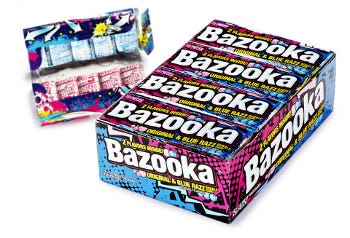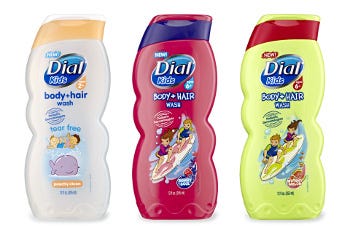Undeniable influence of kids
Imagine a world in which kids make all the decisions. Imagine a time that these decisions include nearly every purchase in the child's household...
Perhaps this seems hypothetical, a potential future unrealized. Yet kids have that power—today. Kids influence up to 80 percent of all household purchases. And as a market segment, they are impossible to ignore. In fact, ignoring them may mark the beginning of the end for your brand.
Why consider kids?
Their numbers alone should raise your interest. Consider that Gen Z is comprised of 61.2 million toddlers to teens ages 14 and under.

Kids BandAid
The fact that they have money with their parents' approval to spend it, and are encouraged to express opinions and influence in their family, should further raise your interest. Today's kids are EMPOWERED! Children's spending had roughly doubled every ten years for over three decades, and had tripled in the 1990's. Kids 4-12 spent $2.2 billion in 1968, and $4.2 billion in 1984. But by 1994 the figure climbed to $17.1 billion, and by 2002 their spending exceeded $40 billion.1 These figures are direct spending by kids. Taking into account spending influence results in staggering numbers. For example, in 2012, kids buying power and influence had reached $1.2 trillion, with a "T"!General social, family and kid trends have added to kids' power. Consider the dramatic increase in purchase influence. In the 1960's, children influenced about $5 billion of their parents' purchases, affecting decisions by such means as "The Nag Factor." These were the days when children were to be "Seen & Not Heard." By 1984 that figure increased ten-fold to $50 billion as times changed, and parents began to involve their children more in purchase decisions.2 This trend has continued. Today's parents ask for children's preferences. The modern family is an inclusive environment, in which nearly everything is shared, and parents encourage and empower their kids. Moms choose the category, kids choose the brand.

Kids Bazooka
How do kids relate to brands?Kids' relationships with brands begin at a very early age. At six months of age, babies begin to recognize brands by forming mental images of corporate logos and mascots.3 Brand loyalty may begin as early as age two. By age 3, one out of five American children make specific requests for brand-name products. By age 5, children are ready to make their own (parent-financed) purchases. And by age 7, they are totally in control. With this control comes power—a power to make their own decisions. Add the complexities in a seven-and-older child's life (including elusive tweens and teens) and prepare yourself for potentially turbulent brand relationships.4 Yet many of these relationships last a lifetime. In fact, in many categories over 25% of brand preferences persist from childhood to adulthood. Adult brand allegiance is powerfully influenced by nostalgia and childhood associations.5
Not everyone is comfortable with these trends, or their implications. At the root of these concerns is Trust. We suggest that marketers adopt an open, honest and transparent approach. Today's kids and adults see brands transparently, and are aware of everything. And more, kids and caregivers are connected by technology and share everything as well. They are what we call prosumers, in that you can't con a prosumer. Extremely marketing savvy, their acceptance requires a genuine interest in meeting THEIR needs. Remember and apply the Golden Rule, and do unto others...
Like all of us, kids also live in a world of infinite choices. A growing list of products, services and activities vie for kids' attention, and compete to be a part of their increasingly over-scheduled lives. In 2010, the average grocery store carried nearly 40,000 SKUs, up from 8,000 in the 1970's. The average American receives more than 3,000 media messages per day, and sees as many as 10,000 brands per day. Kids today have adjusted to this reality by filtering information and options at warp speed. As a result marketing to this group is terribly challenging. Creating a valued relationship in which kids choose, share, seek, and short list your brand is the dream state. Making that list hinges on the first crucial step, being chosen.

Kids Dial
The goal is certainly, at the very least, to make the list. The brass ring is much more. It's about creating valued relationships between kids and THEIR brands. To secure a spot in this circle, you must be real and relevant. Adopt a kid lifestyle. And of course, everything matters.The desired perception is, "That brand is for ME!" The fact that kids and adults are totally different in many, many ways is fundamental and obvious. The challenge is in engaging kids and adults (parents, gatekeepers and gift-givers) simultaneously. Kids' brands must effectively apply balanced, bimodal messaging to speak to kids and caregivers. Differences in tastes (literally and figuratively), communication skills, perceptions, comprehension and drivers require a deliberate, calculated approach. Appeal to and engage one target or the other, or risk losing both. Then package your brand to emote embody, entice, enhance and endure.
Effective, proven approaches to meeting these challenge abound. Leading brands (particularly tomorrow's leading brands) are involving specialists—including kids—in their marketing, advertising and product development. As children grow, their relationships with brands grow. The best way to ensure an enduring, valued relationship is to keep your brand relevant.
What tools should be considered?
Helmut Krone, noted advertising icon and Hall of Fame member for his work with such brands as Volkswagen, once stated that "every company, every product, needs its own package." The package, by our definition, includes every aspect of the brand experience. This "package" is the face of your business strategy. The device which facilitates your customer/brand relationship.
A valued relationship places kids and the adults in their lives at the heart of brand activities. A child's needs, desires or interests are expressed to Mom in the form of a request. Mom approves the request and the child tries the product. Provided a positive experience, the product is now endorsed by Mom. A multi-level, emotional connection is formed. Revitalization is the last, on-going step to keeping the product relevant and preferred over alternatives—unless deposed by a challenger. The result is an enduring relationship and allegiance which provides benefits to everyone involved.
The tools have not changed completely, rather they have evolved. In effect they are the same "4 Ps" of old; Product, Packaging, Promotion and Positioning. As evidenced every day, these tools have increased in scale at the expense of efficiently reaching the audiences they pursue. In turn, target audiences have come to expect personalization from THEIR brands.
Effective kids' marketing applies all of these tools, appropriately and masterfully. Take for example packaging, in the literal sense. Today's products and packages reflect the changing expectations of their audience, and the trends which affect them.
Nearly two decades ago, we wrote a White Paper suggesting that packaging in all categories would benefit from the communication style of toy packaging, and that in time this would be realized. If you walk through mass retailers today, this point has in fact proven true. Dynamic graphics, visual treatments, exciting and emotive colors appear on nearly every package in every category. In recent years, simple, clean graphics and the use of white have become the latest trend. In part this is a reflection of consumers desires for simple solutions, and in part it is intended to stand out among the cluttered chaos on shelf.
The cleaning products category is a favorite example. Everything is now either visually exciting and dynamic, or pure and simple. Modern day realities, and the trends that have created them, have transformed expectations. Successful brands have transformed as well.
Why is transformation required?
As we have previously stated, the key to success lies in relevance. Kids, as no other customers, demand transformation. Their worlds are filled with products which transform literally and functionally. Toys that transform. Candy that's a toy. Food that changes color. Pop idols that change their persona. And on and on. Technology alone has changed their expectations. This is a generation that has grown up with multiple screens in every size and configuration, upgrades and updates in the form of 2.0, 2.1, 3.0 and so on. They are the household experts on such matters.
Kids seek out and embrace "new" in their lives. They need the next, new thing. And they want what they want, when they want it and how they want it.
The key to your success is in their hands, hearts and minds.

Bill Goodwin
Bill Goodwin, founder of Goodwin Design Group, has refused to grow up. As a result, he and his group have become a leading authority on brand strategy, insights, innovation and design—particularly for kids and families. Goodwin's clients include many of the world's leading marketers as well as others who aim to be, including Campbell Soup Co., Colgate-Palmolive, Crayola, Disney, General Mills, Hasbro, Hershey, Johnson & Johnson, Kimberly-Clark, Mattel, Nickelodeon, Procter & Gamble and Toys R Us among others. The company's approach is as much a product of Goodwin's experience as they are a part of his group's mission. Do great work with great people. Have fun. Deliver results. Profit fairly. — And stay young.
1. James McNeal, The Kids' Market: Myths and Realities, Ithaca: Paramount Market Publishing, Inc., 1999, and The U.S. Kids Market, a 2002 report from Packaged Facts available at MarketResearch.com.
2. James McNeal, "Tapping the Three Kids' Markets," American Demographics, April 1998.
3. James McNeal and Chyon-Hwa Yeh. "Born to Shop," American Demographics, June 1993, pp 34-39.
4. "Brand Aware," Children's Business, June 2000.
5. Brandchild, by Martin Lindstrom.
.
About the Author(s)
You May Also Like


